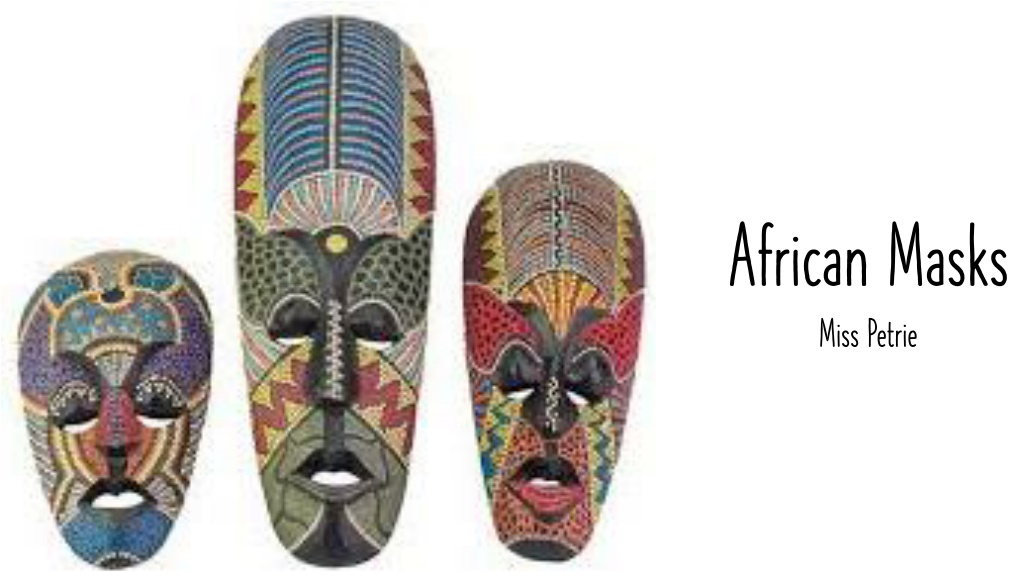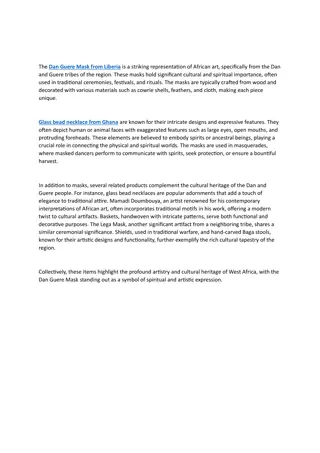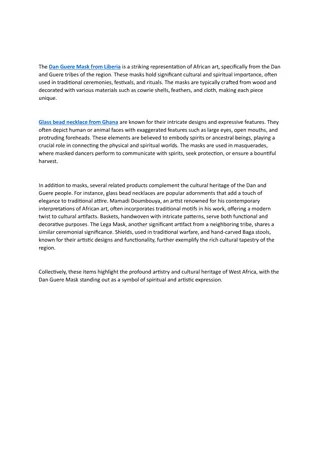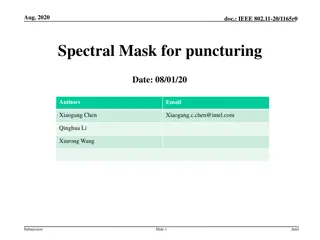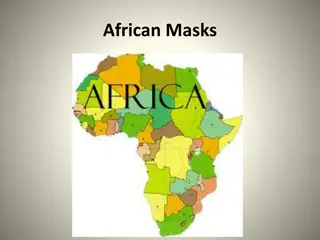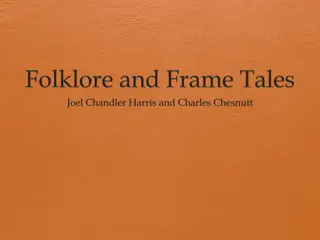Exploring African Mask Culture in Art Class
Delve into the rich culture of African masks as you learn about their role in rituals and ceremonies, their symbolic animal and human representations, and the unique materials used in creating these fascinating art pieces. Get inspired to create your own African mask using pointillism, colors, patterns, and intricate details, while discovering the beauty and significance behind these traditional artifacts.
Download Presentation

Please find below an Image/Link to download the presentation.
The content on the website is provided AS IS for your information and personal use only. It may not be sold, licensed, or shared on other websites without obtaining consent from the author. Download presentation by click this link. If you encounter any issues during the download, it is possible that the publisher has removed the file from their server.
E N D
Presentation Transcript
African Masks Miss Petrie
Learning Intention Learning Intention We are learning about the culture of African masks. We are learning to recreate an African mask. Success Criteria Success Criteria Can you remember a fact about African mask culture? Can you use pointillism? Can you add colour, pattern and detail to your mask?
Facts Facts Masks serve an important role in rituals or ceremonies with varied purposes like ensuring a good harvest, addressing tribal needs in time of peace or war, or conveying spiritual presences in initiation rituals or burial ceremonies. African masks are usually shaped after a human face or some animal's muzzle, albeit rendered in a sometimes highly abstract form. Common animal subjects include the buffalo (usually representing strength, as in the Baoul culture), crocodile, hawk, hyena, warthog and antelope.
Facts Another common subject of African masks is a woman's face, usually based on a specific culture's ideal of feminine beauty. Female masks of the Punu people of Gabon, for example, have long curved eyelashes, almond-shaped eyes, thin chin, and traditional ornaments on their cheeks, as all these are considered good- looking traits. The most commonly used material for masks is wood, although a wide variety of other elements can be used, including light stone, metals such as copper or bronze, different types of fabric, pottery, and more. Some masks are painted. A wide array of ornamental items can be applied to the mask surface; examples include animal hair, horns, or teeth, sea shells, seeds, straw, egg shell, and feathers. Animal hair or straw are often used for a mask's hair or beard. Some of the masks are made to wear on your face, some are to be worn on the top of your head and some are to wear around your chest rather than on your face.
Art time! You will need: - Paper (white or brown) - Coloured paints (or pens or pencils) - A black or a white paint or thick pen - Thin paintbrush - Scissors - Pencil
Inspiration for our lesson Today Inspiration for our lesson Today
